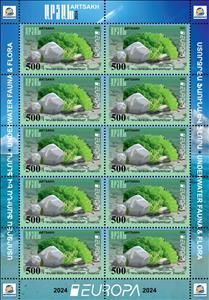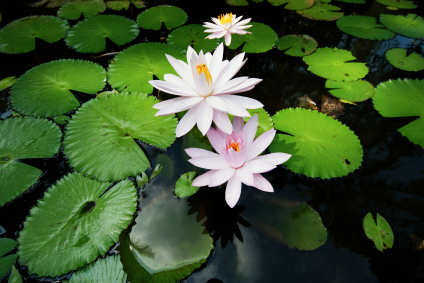Full Pane: EUROPA Dinophyta algae (Artsakh (Nagorno-Karabakh) 2024)
EUROPA Dinophyta algae (Artsakh (Nagorno-Karabakh) 2024)
26 April (Artsakh (Nagorno-Karabakh) ) within release EUROPA (C.E.P.T.) 2024 - Underwater Fauna and Flora goes into circulation Full Pane EUROPA Dinophyta algae face value 10*500 Armenian dram
| Full Pane EUROPA Dinophyta algae in catalogues | |
|---|---|
| Colnect codes: | Col: AZ-NK 2024.SH1 |
Full Pane is square format.
Azerbaijan reintegrated the territory of Nagorno Karabakh in 2023 and the self-proclaimed Artsakh Republic collapsed. These labels were issued by the Artsakh government in exile based in Armenia. The territory is now administered by Azerbaijan and these stamps have no legal validity.Also in the issue EUROPA (C.E.P.T.) 2024 - Underwater Fauna and Flora:
- Full Pane - EUROPA Dinophyta algae face value 10*500;
- Stamp - EUROPA Dinophyta algae face value 500;
- Mini Sheet - EUROPA Underwater Fauna and Flora face value 10*500;
- Se-tenant - EUROPA Underwater Fauna and Flora face value 2*500;
- Full Pane - EUROPA Wels catfish (Silurus glanis) face value 10*500;
- Stamp - EUROPA Wels catfish (Silurus glanis) face value 500;
Full Pane EUROPA Dinophyta algae it reflects the thematic directions:
Aquatic plants are plants that have adapted to living in aquatic environments (saltwater or freshwater). They are also referred to as hydrophytes or macrophytes. These plants require special adaptations for living submerged in water, or at the water's surface. The most common adaptation is aerenchyma, but floating leaves and finely dissected leaves are also common.
The principal factor controlling the distribution of aquatic plants is the depth and duration of flooding. However, other factors may also control their distribution, abundance, and growth form, including nutrients, disturbance from waves, grazing, and salinity.
Aquatic vascular plants have originated on multiple occasions in different plant families; they can be ferns or angiosperms (including both monocots and dicots). Seaweeds are not vascular plants; rather they are multicellular marine algae, and therefore are not typically included among aquatic plants. A few aquatic plants are able to survive in brackish, saline, and salt water. Examples are found in genera such as Thalassia and Zostera. Although most aquatic plants can reproduce by flowering and setting seed, many also have extensive asexual reproduction by means of rhizomes, turions, and fragments in general.
One of the largest aquatic plants in the world is the Amazon water lily; one of the smallest is the minute duckweed. Many small aquatic animals use plants like duckweed for a home, or for protection from predators, but areas with more vegetation are likely to have more predators. Some other familiar examples of aquatic plants might include floating heart, water lily, lotus, and water hyacinth.
Some aquatic plants are used by humans as a food source. Examples include wild rice (Zizania), water caltrop (Trapa natans), Chinese water chestnut (Eleocharis dulcis), Indian lotus (Nelumbo nucifera), water spinach (Ipomoea aquatica), and watercress (Rorippa nasturtium-aquaticum).
Flora is the plant life occurring in a particular region or time, generally the naturally occurring or indigenous—native plant life. The corresponding term for animal life is fauna. Flora, fauna and other forms of life such as fungi are collectively referred to as biota. Sometimes bacteria and fungi are also referred to as flora, as in the terms gut flora or skin flora.
Marine life, or sea life or ocean life, refers to the plants, animals and other organisms that live in the salt water of the sea or ocean, or the brackish water of coastal estuaries. At a fundamental level, marine life helps determine the very nature of our planet. Marine organisms produce much of the oxygen we breathe. Shorelines are in part shaped and protected by marine life, and some marine organisms even help create new land. Altogether there are 230,000 documented marine species, including over 16,000 species of fish, and it has been estimated that nearly two million marine species are yet to be documented. Marine species range in size from the microscopic, including plankton and phytoplankton which can be as small as 0.02 micrometres, to huge cetaceans (whales, dolphins and porpoises) which in the case of the blue whale reach up to 33 metres (109 feet) in length, being the largest known animal.



